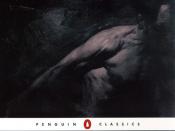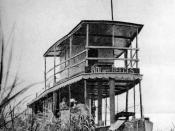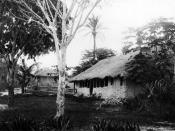In Joseph Conrad's novella "Heart of Darkness" there are no less than eight women: the Belgian aunt of Marlow; the two sinister women at the Company offices; that Marlow regards as the guardians of "the door of Darkness" ; the "wife of high dignitary" whom Marlow's aunt recommends him for employment in Africa; the African laundress for the Company's chief accountant; Kurtz's Intended; Kurtz's mother who died shortly after Marlow returns to Belgium and finally the African woman at the Inner Station. In my essay tackling this novella, I will try to discuss this feminine presence from two perspectives; as persons and as symbols.
In this novella Conrad allows women as persons scarcely any narratological or thematic attention, they appear to function primarily as ancillary details to Marlow's narration about Kurtz and his adventure to the "heart" of Africa, and this is probably the reason why "Heart of Darkness" has always been attacked by critics as "misogynistic;" and these are some justification for this point of view:The principle women of the text ÃÂ Marlow's aunt, Kurtz's Intended, the African woman, and the two knitting women in the Company offices ÃÂ are always positioned in transitional spaces in either the colony or the metropole.
Mostly they are sedentary, stationary and confined to their own territories; unable to wander between cultural, ideological, and national boundaries.
For Marlow women apparently possess only conceptual knowledge of either Africa or Europe; unlike the male protagonists who possess both empirical and abstract conceptual knowledge of both Africa and Europe. For instance, Marlow's aunt sits in her upper-middle-class domestic parlor in Belgium as she sends him off to his adventure in Africa; the two knitting women sit in the outer room of the Company offices and glance at the men en route to the Congo; and, at...


